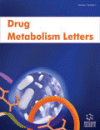-
s Pharmacokinetics of Darolutamide, its Diastereomers and Active Metabolite in the Mouse: Response to Saini NK et al. (2020)
- Source: Drug Metabolism Letters, Volume 14, Issue 1, Mar 2021, p. 9 - 16
-
- 01 Mar 2021
Abstract
Background: Saini et al. recently investigated the pharmacokinetics of darolutamide and its diastereomers in vitro and in vivo in Balb/c mice, reporting higher levels of (S,S)-darolutamide than (S,R)-darolutamide following intravenous or oral dosing, and interconversion of (S,R)-darolutamide to (S,S)-darolutamide. Objective: To present our in vitro and in vivo studies of darolutamide pharmacokinetics in mice, which contrast with the findings of Saini et al. Methods: Nude male Balb/c mice were orally dosed for 7 days with 25, 50, or 100 mg/kg of darolutamide twice daily. Pharmacokinetic parameters in plasma and tissue samples were assessed by liquid chromatography-tandem mass spectrometry. Metabolism and interconversion of darolutamide and its diastereomers were investigated in cryopreserved Balb/c mouse hepatocytes. Protein binding was determined in plasma samples by equilibrium dialysis. Results: On day 7, Cmax was reached 30 min after the last dose. Rapid formation and greater exposure of keto-darolutamide versus darolutamide were observed. Plasma exposure of (S,R)-darolutamide was 3-5-fold higher than that of (S,S)-darolutamide. The fraction of unbound keto-darolutamide was almost 6-fold lower than for darolutamide. In mouse hepatocytes, the conversion of (S,S)- to (S,R)-darolutamide was observed, but the conversion of (S,R)- to (S,S)-darolutamide was not detectable. Back-formation of keto-darolutamide to both diastereomers occurred at low levels. Conclusion: The darolutamide diastereomer ratio changes upon administration in mice and other species due to interconversion through keto-darolutamide. This is not considered clinically relevant since both diastereomers and keto- darolutamide are pharmacologically similar in vitro. Based on the high protein binding of keto-darolutamide, its contribution in vivo in humans is considered low.


